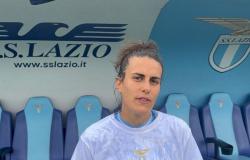Tests are underway in Trieste these days for the new functions of Flatfish, the underwater drone for advanced inspections designed and industrialized by Saipem, a world leading company in engineering, drilling and construction of large projects in the sectors of energy and infrastructure. Saipem, through Sonsub, its center of excellence for underwater technologies, has developed the Hydrone program with the aim of industrializing a fleet of three different models of underwater drones, each with its own different functionalities, capable of operating in complete autonomy thanks to artificial intelligence. Saipem is, in fact, the only company in Italy that designs and produces underwater drones capable of carrying out both inspection and intervention activities, making them operate at the service of its customers.
“We are concluding a phase of the technological development program of one of our drones, the ‘Flatfish’ – states Matteo Marchiori, Sonsub Manager. – At this base we are able to put our robotic systems in the water and prepare them for future projects. An essential phase of our development plan which starts from engineering, passes through the assembly of all the components and concludes with very stringent sea trials, which allow us to test performance and reliability, before deploying the systems into operation in the various areas of the world in which we are active. This unit’s next destination is the Persian Gulf.”
A possible operation in the Sonsub center in Trieste, a real training ground for Saipem robotic systems, which allows testing the reliability necessary to operate in the open sea. Designed in 2016 in the Saipem development center in Marghera (Ve), Flatfish was created by an Italian-Brazilian team and has been engaged in advanced inspection projects since 2021; what makes the difference is the ability to work for up to 12 consecutive months alternating 12 hours of work and 12 hours of charging and the possibility of operating at a maximum depth of 3000 metres.
“The peculiarity of Flatfish is its ability to operate in water without a guide wire, exactly like an aerial drone. This is one of the greatest technological challenges, because moving in water and being able to have a perception of space and objects without a physical connection with a control station on land or on a naval vessel is complex and has required several years of development and innovation.” explains Marchiori. Having returned from Brazil in recent weeks, Flatfish is expected in the Persian Gulf, where he will be busy tracing the laying of a new pipeline.
To date, three models of underwater drones have been tested at sea by Saipem with the Hydrone programme, remotely controlled vehicles that allow very high precision inspection and intervention activities, but also the monitoring of marine biodiversity, seabed mapping and surveillance. of ports and infrastructures, reducing risks for personnel, the environment and operation costs. The other drone models designed by Saipem that are part of the Hydrone program are: Hydrone R, with both inspection and maintenance functions, and Hydrone W, entirely electric and intended for heavy maneuvering interventions. Both are the size of a small car and can be recharged underwater by interfacing with stations similar to a computer docking station.
Just recently, Hydrone R, which is operating for Equinor off Norway, achieved the extraordinary global underwater residency milestone of 167 consecutive days. The development of the second version of Flatfish is scheduled for the end of 2024, which will use top-level technologies, anticipating the needs of the sector. A commitment that Saipem also maintains alongside its customers in the energy transition and decarbonisation path, and is among the key global players in the development of technologies capable of capturing carbon dioxide, in the recycling of plastic and in the construction of hydrogen production plants green. A diversification of services in line with the future of the planet.





